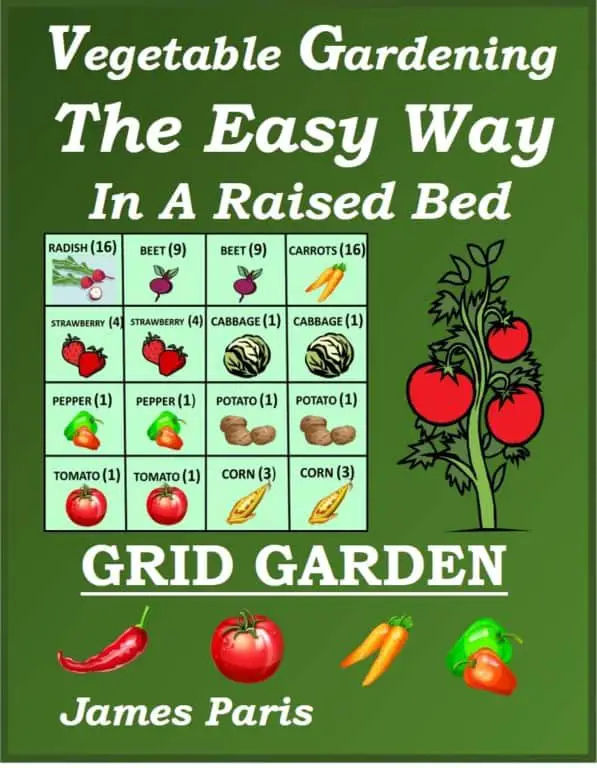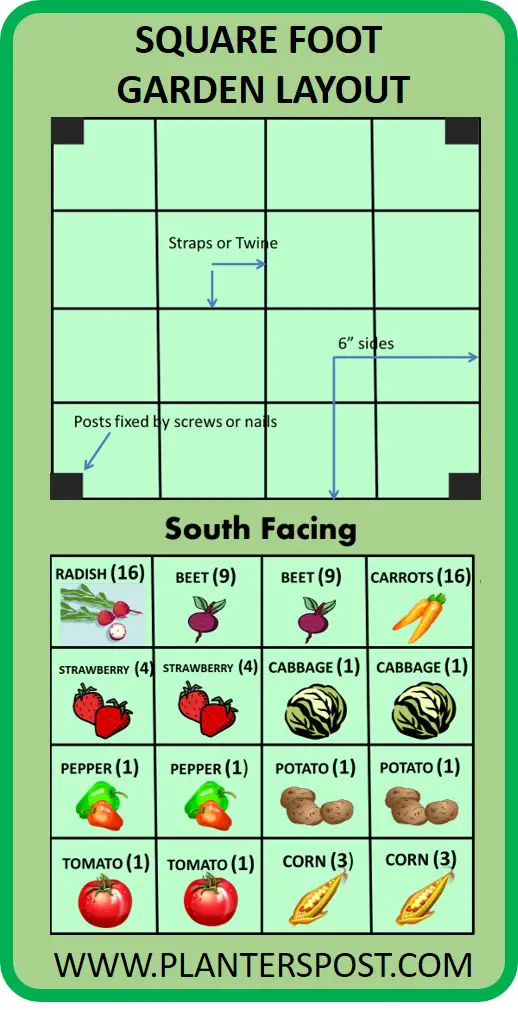First conceived around 20 years ago by a Mr Bartholomew, square foot gardening has an almost cult following.
At its core, Square Foot gardening or ‘Grid Gardening’ is a way to produce the maximum variety of vegetables from the minimum possible space. This usually is a 4 foot x 4 foot raised bed equaling 16 square blocks into which various vegetables & herbs cultivated.
The concept of square foot or ‘grid’ garden, has taken hold of the ‘collective mind’ and indeed has some intriguing advantages over traditional gardening methods. The aspect which I find particularly interesting is the way that crop rotation is handled with this technique.
Square Foot Gardening Rotation?
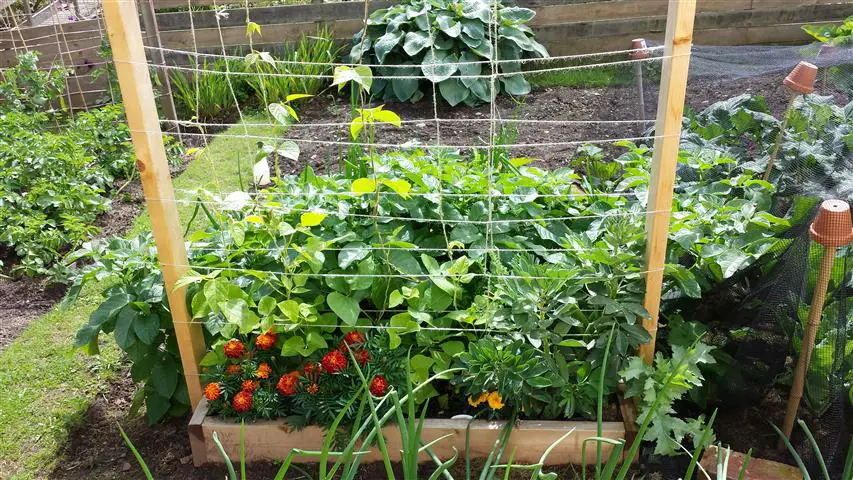
Rotation is crucial in organic gardens both in terms of pest management and to prevent nutrient depletion, and the square foot bed is no exception.
Having 16 distinct growing areas would appear to make crop rotation easy. Mel argues that when a crop is finished all that is required is to replace it with something different, producing an automatic, ‘natural’ crop rotation.
Everyone involved in vegetable growing is aware (or should be), of the importance of crop rotation. This is a method as old as time, to stop the depletion of nutrients needed for any given plant to thrive.
The idea here with square foot gardening, is simply that you move the crop around to the next square each time the harvest is taken, thereby giving you a further 15 nutrient rich spaces for the particular vegetable !
Managing A Square Foot Garden
The first thing to consider after you have constructed your SFG, is the growing medium or compost mix. Plain topsoil is ok if that is all you have, however it tends to get very compacted in such as small area as a raised bed garden (which is basically what a SFG is with modifications).
You have a few options when it comes to infilling your SFG, but the medium growing mix I have found to be about one third vermiculite (or pearlite), one third good quality compost, and one third good topsoil.
This mix will grow most vegetables and flowers very well, and will not ‘compact’. This means that the bed is easy to maintain free from weeds, and the harvest is easy to pick out from the compost.
The vermiculite is added to keep in the nutrients and water. It also adds ‘friability’ to the mix, keeping it loose and crumbly to allow for optimum growth conditions.
If you have never tried the idea of a Raised Bed Garden, perhaps you could make a start by simply converting a raised bed into a square foot garden plot just for a trial – could be interesting !
into a square foot garden plot just for a trial – could be interesting !
Why Square Foot Gardening?
Along with a growing awareness that the human race must start taking more responsibility for its environment, some people have also come to the realization that doing so actually means a win-win situation for us all in many different ways.
Why is this? In a nutshell it is simply down to the fact that if we treat our environment with respect, then in turn we are rewarded with better health, both physical and mental, as well as better living conditions free of pollution where we can truly enjoy what nature has provided.
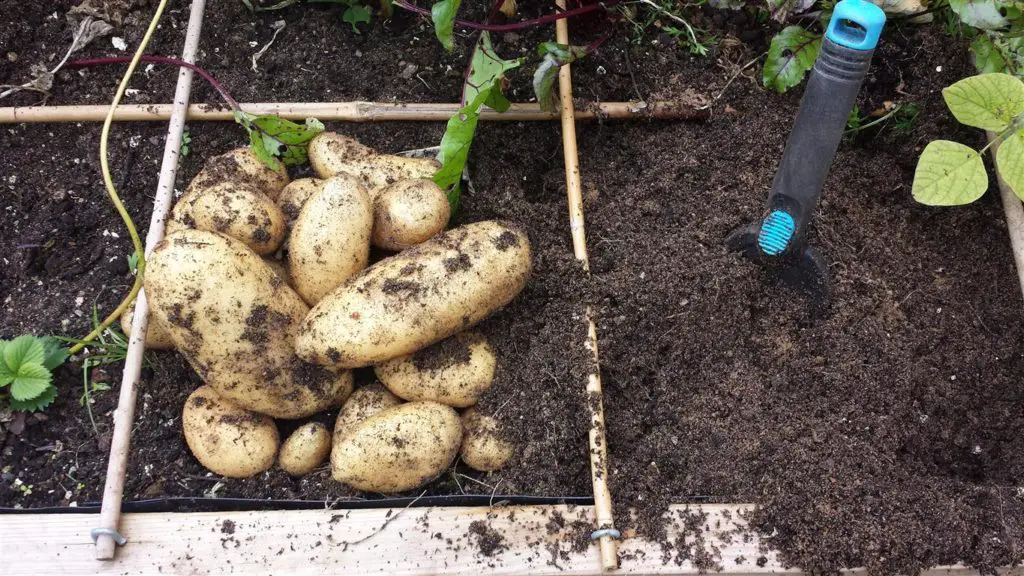
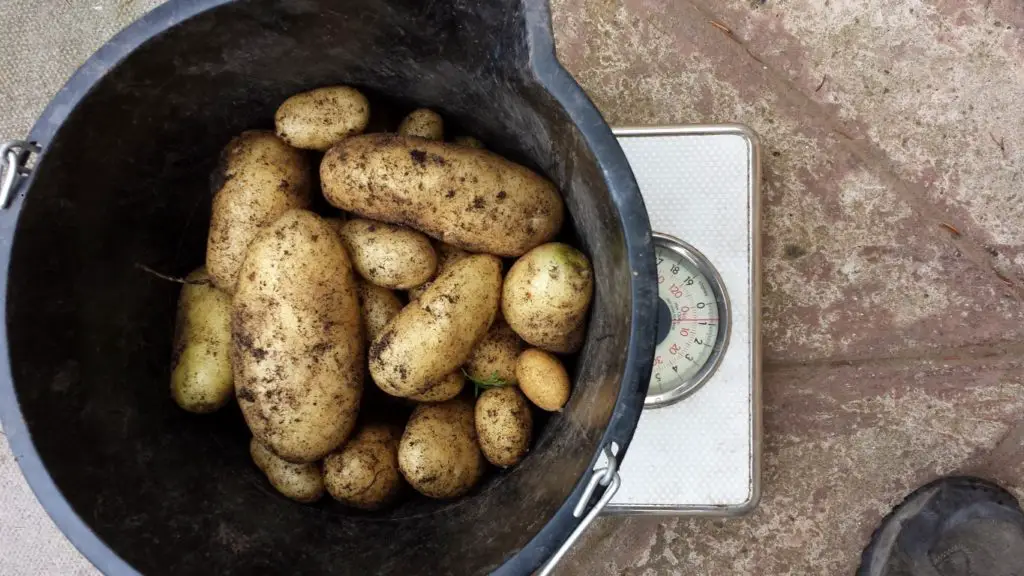
Gardening in small spaces using the Square Foot Gardening method first pioneered by Mel Bartholomew in the 1980’s, is one way where individuals can start to take back control from the mega-stores with regard to food production.
It enables us to grow fruit and vegetables without the need for chemical fertilizers and other pollutants that contaminate the supermarket shelves, and instead allows us to grow our produce and feed our families without at the same time damaging our surroundings, our health and our wealth!
Another big factor that promotes the Square Foot Gardening method, is simply down to the fact that it enables people with very limited space to grow their own fresh vegetables.
Even individuals living in city apartments are now finding that the roof space can be ideal for SFG (along with the relevant permissions of course!), and whole communities have joined with their local authorities to release waste land for SFG projects.
Along with these already mentioned, the advantages of using this system can be summed up in the following short list.
Chemical Free Gardening Method:
Because of the nature of this intensive gardening system, there is little or no chemicals involved either with the fertilization methods, or the pest control methods employed. Both are organic in nature and the planting rotation is done in such a way as to avoid the use of artificial stimulants or chemical sprays.
Companion planting methods are employed to a large extent in a Square Foot Garden, to ensure that each plant gets the ‘best of all worlds’ when it comes to growing conditions. This means that plants are grown together for mutual benefit, to control pests and to ensure proper nutrition and excellent quality produce free of chemical contamination.
Convenient:
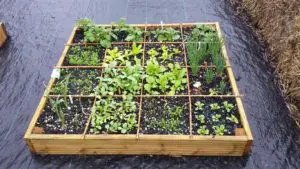
As mentioned earlier, this method requires such a small space (4 foot x 4 foot) that it opens up the possibilities for almost anyone to consider growing their own veg. Even if you live in a city apartment and do not have any garden ground, there is the possibility to erect a SFG on the roof perhaps, or maybe even to join with a local authority gardening scheme – or create one if it does not already exist!
People who have busy work schedules can also find this way convenient in that it is much easier and less time consuming than traditional gardening methods. Weeding is reduced to a minimum as you are not using soil contaminated by weed seeds, and even when they finally raise their heads they are easily pulled out because the growing medium is not packed hard by footsteps.
Economical:
Especially relevant for those already involved in growing their own vegetables – a SFG system means that you are no longer growing heaps of veggies that end up in the compost heap because you cannot consume them fast enough!
This is often the lamentable situation with regards to conventional gardening, where rows of vegetables are grown all at once; leading to wastage and a lot of hard work for nothing.
Included in this “wastage” must be not only be the expense of the seedlings or seeds, but also the cost involved in compost , fertilizer, pest control
, fertilizer, pest control , weeding and maintenance – whether organic in nature or not.
, weeding and maintenance – whether organic in nature or not.
With SFG, the vegetables are grown in an intensive yet rotational manner which is aimed at providing a reasonable amount of the ‘green stuff ‘ right at the time when you can appreciate it most and put it to best use. This avoids needless waste – though it does mean that the compost heap may grow hungry!
This also means that this method is more cost effective than traditional growing, as you are not bearing the financial cost of producing vegetables to end up in the compost heap!

